Collective Housing. 10 stamps
May 22, 2008

The current debate on cities focuses mainly on the issue of density. Land is identified more and more as a precious asset that must be protected and used in the appropriate manner. The dichotomy between the dispersed city and the compact city, Sprawl versus Compactness, of some years ago, has affected urban planning and has conditioned everything, from the design of roads to policies involving the introduction of large companies that control consumption at a world level. But this debate is not new.
At the end of the 19th-century, the visionary solution of placing cities in the countryside proposed by Ebenezer Howard was nothing more than a utopian reaction to the overcrowding and destitution that consumed cities. At the beginning of the 20th century, in Central Europe, the confrontation was established in terms of Siedlungen against Höfe. The model of the Viennese Hof, with its self-sufficient super-block of dwellings, like a skyscraper laid flat on its back, inserted within the grid of the existing city, was in juxtaposition to the low density building, Siedlung, which colonised land around the perimeter of the city. The same argument, but with a different name, was maintained in Brussels, in 1930, at the III CIAM, on two conceptions of a city, i.e., the Garden City, or a city based on high-rise buildings. According to Walter Gropius, “low buildings, better with just one floor, should be located in the low-density outskirts of cities. Once their utility has been demonstrated, buildings with a rational height of from 10 to 12 floors and with centralised, collective facilities, should be located in low-density areas especially. Buildings of average height have neither the advantages of low constructions or tall constructions, to which it is inferior from the social, psychological and, in part, economic viewpoint.” (1) But, what sort of magnitudes are we talking about?
In order to examine this issue, we are going to look at a number of figures. The average density in dwellings per hectare shows exaggerated differences according to the way in which laid out are placed on the land. The number of dwellings that occupy a square area of land measuring 100 meters by 100 meters, usually varies in European cities from 25 to 100. Residential estate with detached homes on plots of 1000 square meters would represent about 10 dwellings per hectare. The average density of Los Angeles is 15. The minimum recommendable density for providing a public bus service is 25. The new planning guidelines in England, PPG3, (2) stipulate that 30 dwellings per hectare should be the minimum for new developments, too high for the British. The average density for London is 42. A density of 60 is required to warrant the installation of a tram service. The average density of consolidated urban centres in Europe is 93 dwellings per hectare. During the development of Singapore in the ‘70s there were 250 dwellings per hectare and today, in the Kowloon region of China, this figure stands at 1250.(3) In general terms, it can be said that high density optimises land use, lessens the pressure on agricultural land, reduces the need to travel and the risk of traffic accidents, making public transport more profitable and creating areas of urban activity that favour trading and cultural exchanges. All organisations, entities and associations that advocate sustainability and low-consumption development, support the idea of high density development and consider ideal density to be around 100 dwellings per hectare.
Land is a highly desirable and sought-after asset and its possession has been traditionally guaranteed in capitalist systems that defend the private ownership of land. The instinct to mark out a territory and have this recognized as one’s own, where all strangers have to identify themselves in order to come in; the possibility of obtaining food from the land without depending upon supply networks and transmitting a delimited and permanent physical space to one’s heirs, converts the instinct of possessing land into one of the main bastions of established societies. This instinct is very strong and deeply rooted in many attitudes, and so it is impossible to fight against the wishes of large part of the population (especially strong in Northern Europe, where individualism is stronger in social relationships) who want to have their own home, an intimate relationship with the land, a small plot for growing things, and who do not want to have to use a lift or even meet the neighbour in the doorway. Many people want to live in a house and not in a flat. In this sense, market forces are unstoppable and therefore the debate is guaranteed.
It is also clear that the number of persons who make up the family unit or cohabit will drop to 2 in the coming years and if city planners wish to maintain the same levels of activity in today’s urban centres, it will be necessary to increase the density of consolidated cities. At this time, the main housing developments that are currently underway are moving in three different directions: Firstly, re-composing the density of urban centres by making them more compact and renewing their worn out tissues; secondly, by creating a new way of occupying land with mixed, well-integrated and self-sufficient organisations with a small plot of controlled nature; lastly, by limiting the occupation of agricultural land and suburban developments on the periphery of cities so that the natural milieu is preserved in certain areas.
“Specific neutrality ” (4), an article by Atelier Kempe Thill, published in issue 20 of a+t describes a series of changes that effect the collective dwelling, which will lead to an architecture towards a customer orientated, more flexible and individual, as an alternative to suburban living. In this issue, we take a closer look at these issues and highlight the new approaches to this subject that will be the subject of discussion from now onwards. Today, the modern utopias of the modifiable house can no longer be identified with the flexible house. The repercussions of the economic system on our life have become much more important than those generated by the physical milieu in which we pursue our daily lives. We perceive flexibility as being the ease with which we can travel around the city, change job and place of residence, in the way we can adapt our habits in the case of an unexpected event which encroaches upon the cohabitation unit… Economic and social mechanisms allow us to adapt easily and more quickly than before to changes that can occur in our relationships. When they need to make a change in their lives, most people move to a different house, rather than transforming the one they have. At this time of uncertainty, we have gone from a rigid system which was shocked by everything foreign, to a flexible system which is indifferent to the unusual, as there is no curiosity about anything which is different to us, but rather a sense of insecurity. It is what Richard Sennett calls the flexibility and indifference of the new stage of capitalism (5). The attachment to the place where one lives and where one works has gone, and the place where one lives seems to be, more and more, the place where things are produced. The house of the future will be an office; an office where one sleeps and sometimes, only sometimes, one cooks. It will also be a hotel in which all ancillary services will be taken care of and –why not?–, an old people’s home, where it will be necessary to comply with the strictest rules of accessibility. It will be necessary to provide an alternative to every stairway, whether this is a ramp, an automated chair for the handicapped or an adapted lift. The increase in demand is unstoppable and houses will become, in just a few years’ time, an accessible, visitable and adaptable residence.
How we have changed!
Currently, the basic premises of collective dwellings are also being reformulated and they are becoming more flexible and indifferent. Their situation within the urban environment is less important due to the fragmentation and dissolution of contemporary cities. The offer is enhanced by a multiplicity of opportunities. Examples and solutions have merged together and functional separations fade away in the mist of postmodernity. There is no clear separation between different areas. The dispersed city is no longer what it was, nor does the compact city present that level of concentration that might distinguish it from the suburban developments built all around it. Today, the level of fragmentation of the urban unit is clear and the differentiation between city, suburbs and the countryside is not as clear as it was before. In the future, uncertain times are coming which will surely take into account current issues such as globality and fragmentation, as well as their consequences, the concentration of power and the break-up of urban space.
No one knows anyone who says that they live in a dispersed place without identity. Dispersion and a lack of character exist somewhere else and this may only be an unrepresentative example, but there are more and more people who feel the urge to live the life of a nomad, who would live anywhere in the world and who can hardly remember where they lived just ten years ago (6) People are concerned about having culture centres, good schools, an airport and open areas near their home. What they like is a sprawl with a cultural content, well connected and with easy access to the natural milieu. A dispersed place in which they feel at home. For this to happen, the dwelling, be this individual or collective, must be connected to an urban centre with sufficient critical mass to provide for stimulating cultural activities.
The dwelling of the global nomad is already being considered in areas near airports. The clearest example of this is the Toolenburg-zuid residential area beside Schipol airport, near Amsterdam Steven Holl justifies the project by basing this on 5 ideals for the 21st century. It is a city designed for citizens of the world, for suburban travellers on a world scale, for a mixture of cohabitation units, which we do not even know at this time and which might emerge from the development of current family units. The Cactus-Towers are for those “international peripatetic types who see central Europe as an ideal base. An architect from New York, an artist from Brazil, a musician from Los Angeles, an actor from San Francisco and a computer programmer from Hong Kong finally can own a ‘sky space’ in this new international hybrid zone.” (7) Space-time-information. Combinatory and crossbred living. Live-work-leisure. Global living without automobile dependency. Ecology and metonymy. These are the new ideals.
The new situation would like to provide an answer to these ideals; but it has not got one yet.The house of the future will have to get labels or quality stamps to attract possible customers. Ten stamps to identify itself with, ten homes, one inside the other, and not always in the same order of importance– 1.The neutral house, that identifies the construction of the house with container-dwellings, with a character and identity that do not impose themselves on their surroundings– 2. The flexible house, adaptable and modifiable for any subsequent use, even different to its use as a dwelling– 3. The diverse house, which is capable of embracing any a kind of cohabitation unit of different sizes and compositions, from monopersonal to small communities–4. The green house, the ecological house, that only takes up just enough land, so that nature takes part in the building; with waste recycling systems and the use of clean energies– 5. The office-house, marketed in m3 instead of m2, with high ceilings and modular spaces, that provides rapid access to information networks and which allows work to be done at home– 6. The hotel-house which includes the possibility of providing other uses, extra services, commercial and leisure, such as a bar-restaurant, a small gymnasium, or 24-hour laundry; 7. The car-free house, in a dense environment, which provides the option of introducing a rapid and efficient public transport service between the home and workplace, which hinders the use of private vehicles in residential areas, favouring alternative transport means such as bicycles or shared electrical cars– 8. The piazza-house, with collective meeting places within the building, such as terraces, internal patios or gardens, that make it easier for residents to meet– 9. The assisted-living house, the house-home-for-oldpeople, which improves accessibility, visitability and adaptability, which includes a doctor’s surgery, nursery school and allows home medical attention– 10. The protected house, that provides a safe haven for people who live alone, that ensure physical and psychological protection in the immediate environment. Unfortunately, the last of these houses is a house with barriers and involves the inevitable exclusion of everything which is foreign to it. In the United States, more and more communities are appearing enclosed behind a wall, gated communities, with private security measures and controls. They are bringing what is familiar closer, –although no one knows what their neighbour is doing, but what is unfamiliar is also getting further and further away.
In contrast, the old Europe continues to live its wonderful day, more and more enclosed in its protected universe, and seems oblivious to the convulsions that are shaking the world. I will continue with Sennett, “About the sociability of living with strangers: the mark of the civic realm now is mutual accomodation through dissociation. That means the truce of letting one another alone, the peace of mutual indifference. (...) On the negative side, mutual accomodation through dissociation spells the end of citizenshipe practices which require understanding of divergent interests, as well as marking a loss of simple human curiosity about The Other.” (8)
Although the protected house is indicating to us that the production of protective shells is a means of affirming one’s Ego in the presence of the Other, this circumstance must not make us intolerant to changes in the make-up of the populace, which is being augmented by new waves of immigrants. Houses will have to cater for several different cultures, and an array of different gods will be placed at their entrance with the scent of a wide variety of incenses.
The Ægis Project of Krzysztof Wodiczko puts us on our guard when asked the question – Where are you from? They are two monitors connected to a portable computer with images pre-recorded by the wearer in response to different situations. The indifference of the global nomad can be combated with perplexity, as the one Wodiczko provokes, by anyone who dresses the foreigner with these heavy backpacks of a monitorised angel. Flexibility knows no special limits, nor those of the imagination of the artist. The wings that speak provide the interlocutor with model responses, control their impulses and issue one message or another, depending on the tone of voice of the person who is asking the questions. The right hand monitor, in a preliminary design of the Ægis, could answer, for example, to a habitual resident of a gated community, as follows (9):
“(...)
- You figured out my accent.
So quick?
– ...
- Where am I from?
I’m from outside.
– ...
- What good will my answer do you?
Maybe give me a feeling of inferiority.
And you a feeling of superiority.
– ...
- You’re from here.
Your Highness, you recognized my accent.
And asked me where I was from
(...)”
Article published Density. Condensed Edition. New Collective Housing.
Notes
(1) Walter Gropius. “Low, medium-high or high-rise building?”. Includen in the book by Carlo Aymonino, L’abitazione razionale. Atti dei congressi CIAM. 1929-1930. Marsilio Editor. Padua. 1973.
(2) PPG3, Planning Policy Guidance, Note 3, Housing. Requires local planning authorities to avoid developments which make inefficient use of land (i.e.less than 30 dwellings per hectare net) and to encourage development at levels between 30 and 50 per hectare net. They should also seek greater intensity of development at places with good public transport accessibility such as town centres, local centres, major nodes and along good public transport corridors etc. (PPG3, paras. 57 & 58). The Council will seek justification for densities below 40/ha net in Urban Areas.
(3) Source: David Rudlin. “Tomorrow: A Peaceful Path to Urban Reform: The Feasibility of Accommodating 75% of New Homes in Urban Areas”, 1998. Quoted by Michael Breheny in “Densities and Sustainable Cities: The UK Experience”
(4) Atelier Kempe Till. “Specific neutrality. A manifesto for new collective housing”. a+t 20. Vitoria-Gasteiz. Autum 2002. Pages 4-13
(5) Richard Sennett, “Capitalism and the City”. Cities for the new millennium. Edited by Marcial Echenique and Andrew Saint. Spon Press. London and New York. 2001. Page 17
(6) Aaron Betsky, “Making Ourselves at Home in Sprawl”. Post Ex Sub Dis Urban Fragmentations and Constructions. Ghent Urban Studies Team. 010 Publishers, Rotterdam. 2002. Page 89
(7) Steven Holl. El Croquis 108. “Thought, matter and experience”. Madrid. 1999. Page 152
(8) Richard Sennett, “Capitalism and the City”. Cities for the new millennium. Ibid. 5. Page 21
(9) Rosalyn Deutsche. “Sharing Strangeness: Krzysztof Wodiczko’s Ægis and the Question of Hospitality”. Ibid. 6. Page 184

RELATED POSTS
|
|
|
|
||||||||
|
|


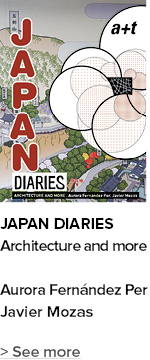




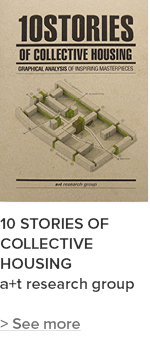

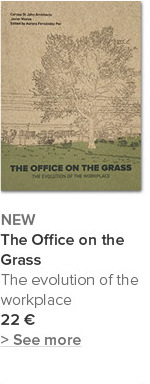

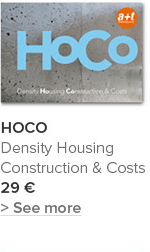

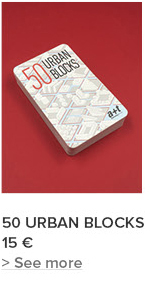
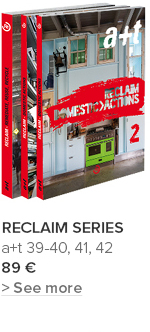

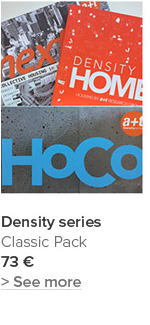











 I've read and agree to
I've read and agree to 


